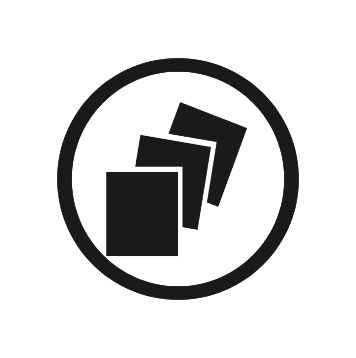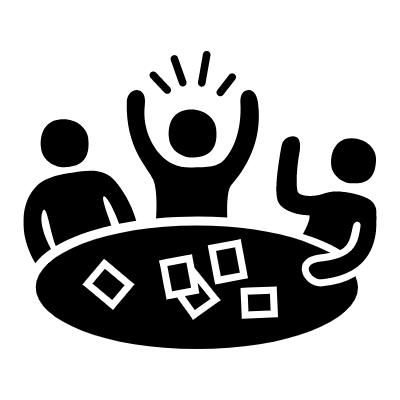
Flashcards
Have you ever tried using flashcards to learn new vocabulary? Learning vocabulary is an essential component of language learning. Without a large vocabulary, it is difficult for English Second Language (ESL) learners to express themselves effectively.
With a large vocabulary, learners can communicate on a wider range of topics, making up for any deficiencies in their grammar. If you have ever traveled abroad, you’ll remember how knowing the right vocabulary item is much more important than perfect grammar. For example, simply standing in a post office and saying the local word for “stamp” is often enough to get your postcard to where it needs to go.
All students at all proficiency levels benefit from learning vocabulary faster. Once ESL learners have mastered the grammar of English, the main difference between them and native speakers is the size of their vocabulary. Therefore, the most important task for high intermediate language learners is to acquire a larger vocabulary.
Since vocabulary is so important, it makes sense to make learning vocabulary a priority in the ESL classroom.

But how do people pick up new words? Most new vocabulary is learned by guessing the meaning of words from the context in which they appear. English-speaking children learn vocabulary just by talking with adults, asking questions, watching movies, and by reading English books. But this method of vocabulary acquisition is very inefficient and takes many hours just to learn even a few new words. Young adults with less time on their hands want a much faster method. Luckily, there is one.
Flashcards
Memorizing new vocabulary using flashcards is a fast, social, fun, and efficient strategy for learning new vocabulary in your second language. A study conducted with pre-university students learning English found that the students who used flashcards performed significantly better than the students who learned vocabulary using traditional classroom methods (Komachali & Khodareza, 2012). Many studies have found the same positive result with students learning history, chemistry, mathematics, music, economics, foreign languages, and English as a second language.
What’s a flashcard?
A flashcard is a piece of paper or cardboard with a clue on one side and a target vocabulary item on the other. Usually, multiple flashcards are shuffled together in a deck of cards, selected one at a time. One person (the teacher) shows or reads the clue, and learners try to guess the target vocabulary item. If no one can guess the answer, the teacher gives the answer before selecting the next card.
A variation of the flashcard idea is to have both the clue and the answer on the same side of the card. The advantage of this configuration is that the clue can be kept secret until read aloud during a card game that is played in small groups to promote interactive oral practice and listening skills. Students take turns selecting a card from the deck and reading the clue aloud. The first person to guess the answer correctly then keeps the card. The person with the most cards at the end is declared the winner. Used as a card game, flashcards become more social and competitive, which adds excitement to the classroom dynamic.
Flashcards are effective but uncommon in classrooms
Considering the evidence in their favour, why aren’t flashcards used more frequently in the classroom? Flashcards take time to create. Teachers under time pressure to get through the curriculum don’t want to devote many hours of class time to the creation of flashcards and to playing boisterous card games. Making the cards is therefore left to each student to do as a personal study strategy. Consequently, few students find the time to make flashcards outside of the classroom. Nobody seems to have time for good pedagogy.
Some teachers may share online resources with students in the form of interactive vocabulary quizzes. A better strategy would be to invite students to play a flashcard game in groups. The oral aspect of flashcard games makes vocabulary learning even more efficient because of the production effect (McCleod et al., 2010).
Whether your teachers use flashcards in the classroom or not, accelerate your learning by creating your own flashcards to master the vocabulary of the course. A large vocabulary will make you indistinguishable from an native speaker in your ability to communicate in the target language.
Flashcards in the Actively Engaged Series
The pedagogical advantages of using flashcards in the classroom are too great and numerous to ignore. That’s why the Actively Engaged Series of textbooks includes flashcards in every book.
If you have never taught with flashcards or you haven’t used them in a while, contact us for one or more samples of one our textbooks. Photocopy the flashcards for your students if you are not ready to order the books for your students. If you are ready to switch books, you’ll be amazed at the other advantages your students will enjoy by getting Actively Engaged.
References
Komachali, M. E., & Khodareza, M. (2012). The effect of using vocabulary flash cards on Iranian pre-university students’ vocabulary knowledge. International Education Studies. https://doi.org/10.5539/ies.v5n3p134
MacLeod, C. M., Gopie, N., Hourihan, K. L., Neary, K. R., & Ozubko, J. D. (2010). The production effect: Delineation of a phenomenon. Journal of Experimental Psychology: Learning, Memory, and Cognition, 36(3), 671-685.
Create glossaries and flashcard games fast on the VWT
Make your own flashcards with the Virtual Writing Tutor.

